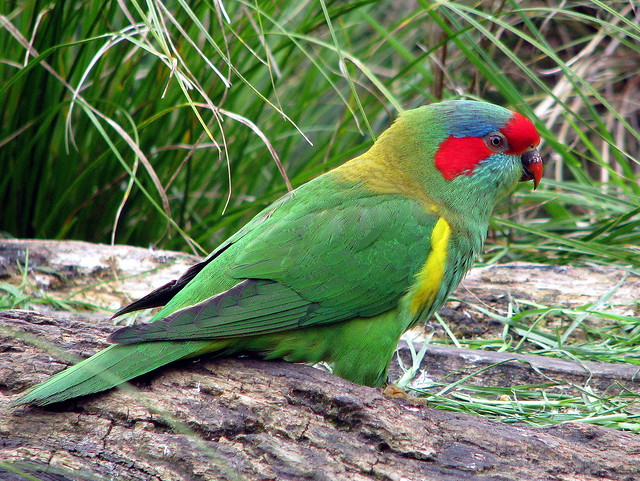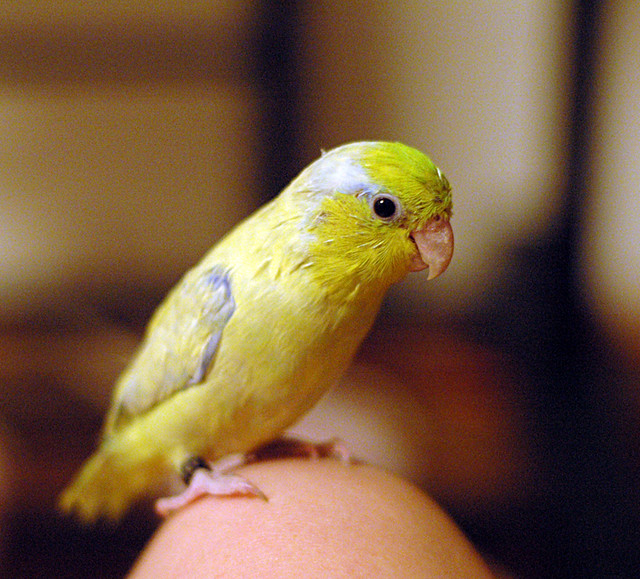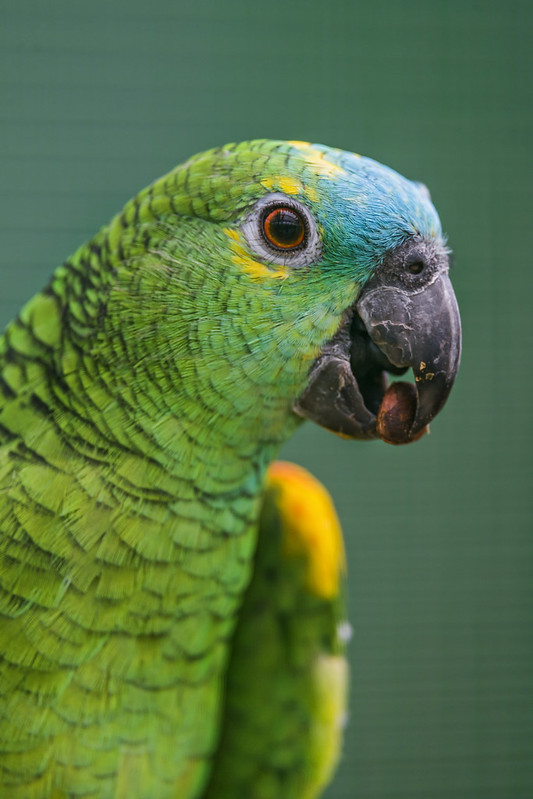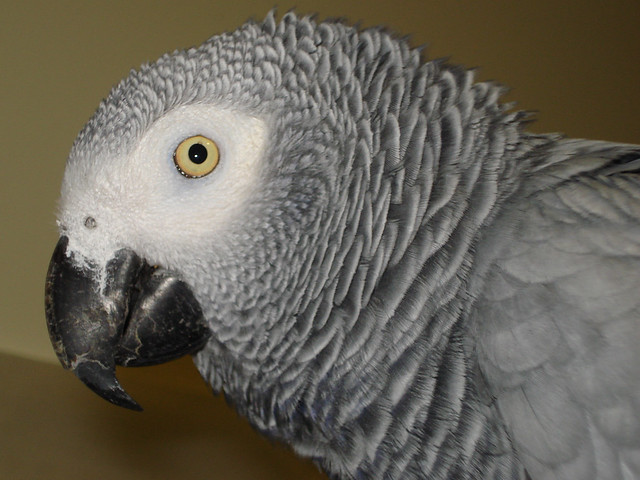 |
| Photo by Kiwi~Steve |
There are over 50 species of lories and lorikeets in areas and countries nearby but only about 7 from Australia itself: 'musk lorikeet', 'little lorikeet', 'rainbow lorikeet', 'varied lorikeet', 'scaly-breasted lorikeet', 'red-collared lorikeet', and 'purple-crowned lorikeet'. I will mention each briefly with pet potential information.
Musk Lorikeet. Glossopsitta concinna.
(green keet, red-eared lorikeet) Weighing in at about 60 grams with a length of approximately 22 cm (9 inches).
The musk lorikeet relies on mainly native flowering shrubs and trees for food and can cause some problems in commercial orchards. In the wild, the musk lorikeet inhabits coastal woodlands and eucalyptus forests, often in large flocks of several hundred.
Very rare as pets in America and Europe but makes a delightful pet in Australia but still not very popular due to government regulations that require a licence to keep native birds.
Little Lorikeet. Glossopsitta pusilla.
(red-faced lorikeet, green parakeet) Approximately 40-45 grams and about 15 cm (6 inches) long.
Like others in the family, the little lorikeet eats mainly fruit, pollen and nectar but prefers to be high in the canopy of trees. In the wild, the little lorikeet inhabits East Australian forests, coastal heath and open woodland, and is very sociable often forming large flocks.
Not kept as a pet in its native Australia and a very rare pet in Europe and America.
Rainbow Lorikeet. Trichoglossus haematodus Malaccans.
(blue mountain lorikeet, green collar lorikeet, bluey, Swainson's loris) 125 grams approximately with a length of about 30 cm (12 inches).
Around flowering trees and sometimes in the company of scaly-breasted lorikeets, the rainbow lorikeet may congregate in noisy flocks of several hundred to roost and eat.
The rainbow lorikeet is very popular as a pet bird in its native Australia and also quite popular in Europe and America. A pet one can be a good source of amusement as they are always playing, and a young bird can become tame quite quickly.
Varied Lorikeet. Psitteuteles versicolor.
About 55 grams and average 19 cm (7.5 inches) long.
In the wild, the varied lorikeet is mainly found in large flocks in Melaleuca and eucalyptus woodlands in the tropical lowlands of Australia.
Virtually unknown as a pet in America and Europe and very rarely a pet in Australia with just a few in captivity.
Scaly-breasted Lorikeet. Trichoglossus chlorolepidotus.
(green and gold lorikeet, greenie) About 75-80 grams and about 23 cm (9.5 inches) in length.
Although common in urban areas where it makes use of nectar-rich garden plants, in its natural habitat the scaly-breasted lorikeet will form large flocks, often in the company of rainbow lorikeets. These flocks will travel from tree to tree in the open forested areas of its native land.
A quiet pet bird which is also playful and affectionate and can be taught to talk really well. This makes it a popular species of pet bird in Europe, America and its native Australia.
Red-collared Lorikeet. Trichoglossus haematodus rubritorquis.
Approximately 125 grams in weight with a length of about 30 cm (12 inches).
Unlike most of the other species of lorikeet, the red-collared lorikeet prefers to abide as a pair or in a small flock. These move around often due to their food source, the eucalyptus flower being a favourite food so they tend to inhabit the open eucalyptus forests most of the time.
Although good pet birds they are kept in low numbers because of availability and price.
Purple-crowned Lorikeet. Glossopsitta porphyrocephala.
(blue-crowned lorikeet, purple-capped parakeet) About 45 grams and around 16 cm (6 inches) long.
Will form large flocks where the food source is plentiful, including urban gardens and orchards. Their natural habitat in the West is in forest areas, whereas in the East they tend to go for coastal heath, mallee and open woodland areas.
Not very often kept as pets anywhere, but a little more popular as aviary birds.
All the above are kept in varying numbers in aviaries around Australia and the Western world, although some are not as popular as pets or companion birds.
If kept in an aviary a suspended mesh floor is best for ease of cleaning - just hose it down - due to the nature of the droppings, a solid floor aviary will require continuous cleaning.
Due to their special dietary requirements, they can prove to be difficult to give the right foods.
Although the bigger species will eat seed, this should not be their main food but is suitable as an extra to their correct diet consisting mainly of pollen, nectar and fruit. And of course, any nectar-bearing flowers will be most welcome.














